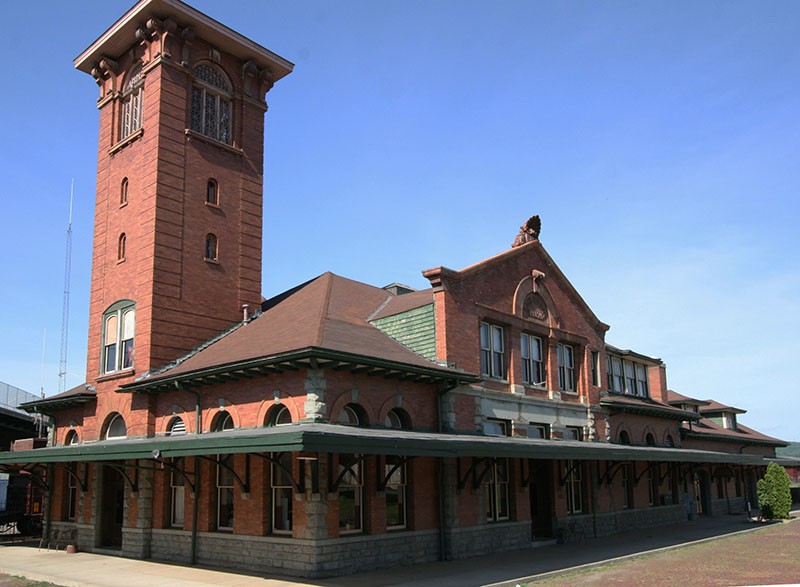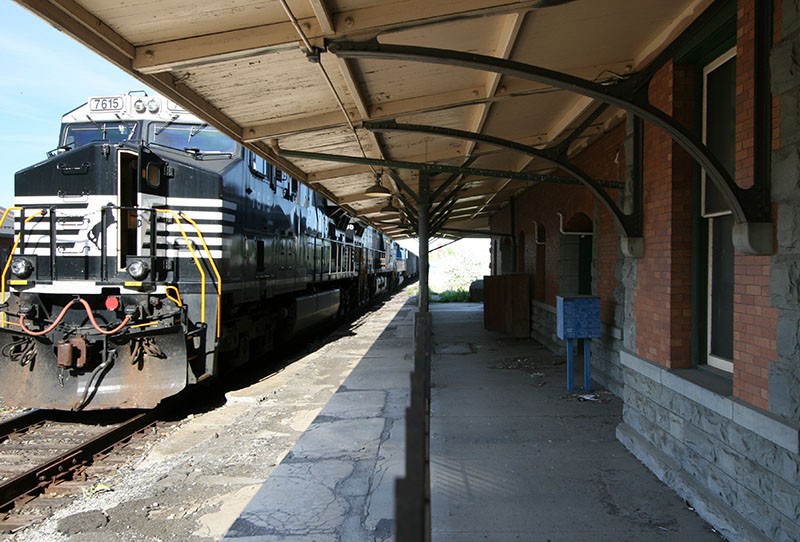Lackawanna Station
Introduction
Text-to-speech Audio
Images
Lackawanna Station in Binghamton.

Lackawanna Station, trackside.

Backstory and Context
Text-to-speech Audio
Built in 1900, Lackawanna Station was designed by Philadelphia architect Samuel Huckel, Jr. in a style described by some as Richardsonian Romanesque.
Over the years railway service declined and in 1963, as part of a massive Urban Renewal project, the station was slated for demolition along with 49 other structures. Since Lackawanna Station was still active, it was to be replaced by a much smaller, more modern facility. Fortunately, Lackawanna Station was ultimately spared from demolition.
Lackawanna Railroad’s most popular streamliner, the Phoebe Snow, made its final visit to Lackawanna Station in 1966, and four years later the station was abandoned. For the next several years the building suffered from neglect and vandalism.
In 1984 local architects purchased the building. The station was repaired and renovated. A grand opening took place in 1986 and within a short time the building was fully occupied by a variety of small businesses.
Of the 50 structures planned for demolition during Urban Renewal, Lackawanna Station is the only original structure still standing.
A radio tower is located at the east end of the terminal constructed in 1913 by Guglielmo Marconi. On November 21 of that year the first wireless messages in Morse code were exchanged between a station and a moving train.
